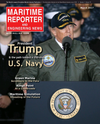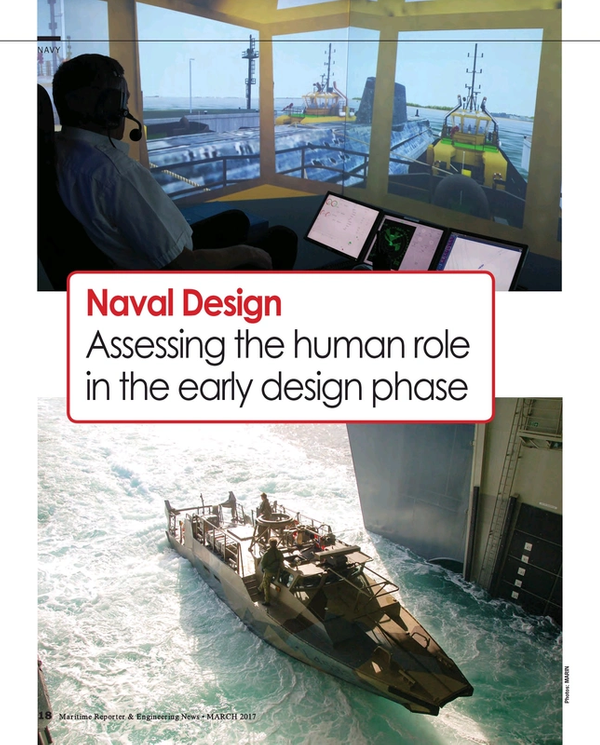
Naval Design: The Human Role
By Johan de Jong
Naval design: assessing the human role in the early design phase
Many navy new building projects face a double challenge; the variety and complexity of operations are increasing, while at the same time, a reduction in manning is a prerequisite in order to lower building and operational costs. Therefore, it is important to identify the required number and type of crew and the supporting systems in the concept phase.
For a long time the use of weapons and platform systems have relied on a high degree of integrated, multi-sensor data processing and decision support systems. These systems are embedded in a concept of operation (CONOPS) and encompass an appropriate command and control structure, effective communication capabilities and protocols and suitable man-machine interfaces.
Nowadays, the main function of a navy vessel is to offer a stable ship platform to facilitate a myriad of operations for both weapon and small platform(s) deployment. Given the increasing relevance of this latter type of operations, a CONOPS approach is useful. This includes matching functionalities with different levels of automation and manning in the concept phase. To this end simulation and full-mission simulators are used. The first assesses the known physical criteria (for instance motion and signature characteristics) and the latter defines the human aspects and mental requirements during interactive simulations. Many man-machine interactions are defined in this simulator phase.
Simulations require the accurate modeling of the motion and response characteristics of all platforms involved and potential interactions with other platforms (incl. air). Additionally, the prediction of vessel performance requires online measurement and fast assessment of the environment. Typical examples of platform related concept of operations using full-mission simulations are lifting (launch & recovery), docking, helicopter landing, evasive actions (torpedo threat), replenishment at sea (or other sea basing) and emergency responses (fire, flooding, NBC attacks). Concerning the manning requirements and their competences, an early use of simulators identifies the level of automation, as well as the need for advisory systems, team interaction protocols and education. In summary, during the concept design of advanced vessels, full mission simulators are essential to analyze the operational tasks and team interactions, to identify the required level of automation and decision support, and finally to establish the necessary training programs.
The Author
Johan de Jong is Manager International Cooperation at MARIN, the Maritime Research Institute Netherlands. MARIN offers simulation, model testing, full-scale measurements and training programmes, to the shipbuilding and offshore industry and governments.
(As published in the March 2017 edition of Maritime Reporter & Engineering News)
Read Naval Design: The Human Role in Pdf, Flash or Html5 edition of March 2017 Maritime Reporter
Other stories from March 2017 issue
Content
- Cabotage Rules Changes Proposed page: 14
- Chantier Davie Shipyard: Competitive Value of Integrated Shipbuilding Tech page: 16
- Naval Design: The Human Role page: 18
- Trump's Navy: A Look at the Future US Navy page: 20
- Singapore’s Survivability page: 28
- Transportation Electrification Arrives at the Waterfront page: 34
- New Fuel Regs Drive Scrubber Business page: 38
- Case Study: 18-day Exhaust Gas Scrubber Install page: 42
- Clean Shipping on the Great Lakes page: 44
- Fast Small Ship Simulator page: 52
- Simulation: Delgado Maritime & Industrial Training Center page: 54
- Simulation: The Centre for Marine Simulation page: 56
- Simulation: Maritime Professional Training page: 58
- Simulation: CSMART page: 60
- The (Really) Big Lift page: 70
- Op/Ed: Shiphandlers Beware page: 84
- Interview: Crystal CEO Edie Rodriguez page: 86


